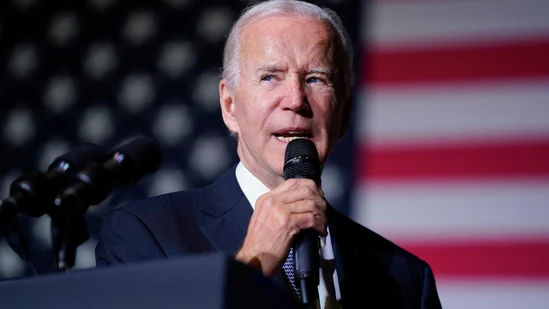Biden's bailout blues! President's new pricey student loan relief plan rings in at $475 billion, ignites debates
President Biden's ambitious income-driven repayment plan for student loans is projected to cost a staggering $475 billion over the next decade, according to the Penn Wharton Budget Model. This estimate is tens of billions of dollars higher than a previous plan that was struck down by the Supreme Court last month. As taxpayers brace for the financial impact, debates surrounding the effectiveness and fairness of the plan have intensified.

Price Tag Breakdown
The Penn model breaks down the projected costs of the Income-Driven Repayment (IDR) plan, revealing that taxpayers could face $200 billion in expenses due to payment reductions under the president's Saving on a Valuable Education (SAVE) plan. This plan is expected to cover slightly over half of the $1.64 trillion in outstanding student loans. An additional $275 billion will be attributed to payment reductions for the $1.03 trillion in new student loans expected in the coming decade.
Cost Range Conundrum
While the estimated cost of the IDR plan ranges from $390.9 billion to $558.8 billion, it is evident that the newly proposed plan's increased generosity could incentivize future student borrowers to accumulate higher levels of federal student loan debt, as highlighted by Penn Wharton junior economist Penlei Chen.
The SAVE Plan and its Impact
President Biden's SAVE plan, slated to take effect on July 1, 2024, aims to alleviate the burden of student loan payments. It proposes cutting monthly income-based loan payments in half, eliminating monthly payments for minimum-wage earners, and forgiving outstanding debt after 10 years of payments for borrowers with $12,000 or less. The plan also offers relief to most community college students by exempting them from debt repayment.
Divided Opinions
Critics of the plan argue that it unfairly shifts the burden of loan repayment from those who willingly took out loans to taxpayers who did not attend college or have already paid off their loans.
Senator Bill Cassidy (R-La.) labeled the income-driven repayment rule as "irresponsible" and "unfair," emphasizing the plan's potential impact on Americans who fulfilled their commitment to repay their loans. Cassidy's office also highlighted that households earning more than $250,000 annually could potentially receive federal assistance if filing taxes separately.
Biden's Loan Forgiveness Setback
The Supreme Court recently overturned Biden's plan to forgive up to $430 billion in loans for millions of borrowers. The court ruled 6-3 on June 30 that it was unconstitutional to write off the debt without congressional approval. The plan had relied on a 2003 law designed for forgiving loans for veterans, arguing that the financial hardship caused by the COVID-19 pandemic warranted similar relief.
Also read | Presidential candidates' coffers competing for cash. Whose campaign has more clout, Donald Trump or Joe Biden?
As discussions surrounding the student loan bailout continue, the cost implications and potential impact on different segments of the population will remain central to the ongoing debate.
Disclaimer: The copyright of this article belongs to the original author. Reposting this article is solely for the purpose of information dissemination and does not constitute any investment advice. If there is any infringement, please contact us immediately. We will make corrections or deletions as necessary. Thank you.
Title:Biden's bailout blues! President's new pricey student loan relief plan rings in at $475 billion, ignites debates
Url:https://www.investsfocus.com









